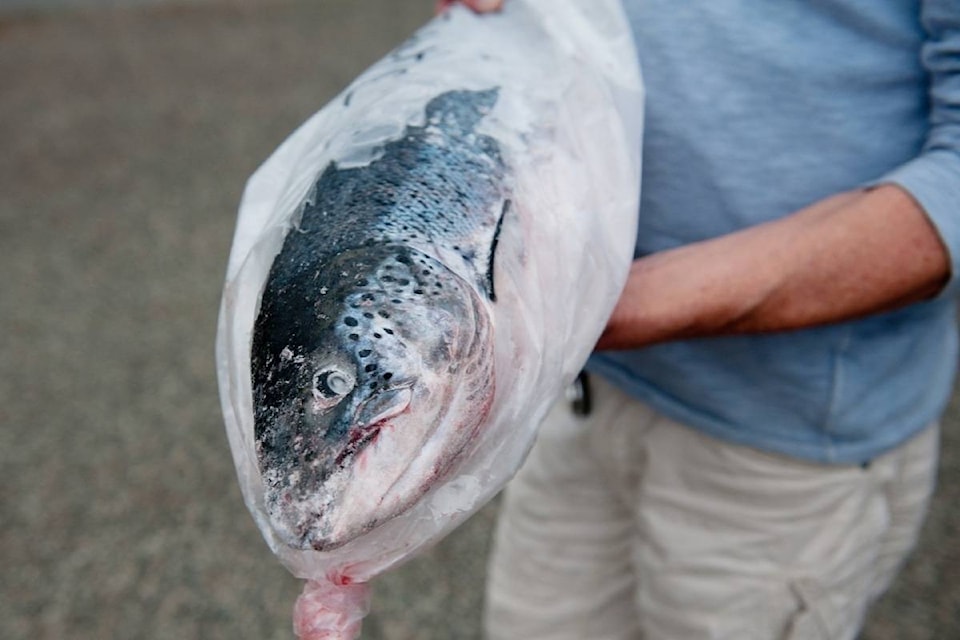Dr. Jim Powell and the folks at the Centre for Aquatic Health Sciences are on the hunt for escaped Atlantic salmon.
Ever since a Washington State fish farm near the border lost thousands of its fish last month, they have been turning up all over the coast. Powell says if anyone finds any around here, he and his team would love to take a look at them.
“Bring ‘em in,” Powell says. “Fresh is better, but frozen is okay, too, and we’ll do a full work-up on it.”
Among other things, Powell says, they want to study the fish to see if they are carrying any disease.
“We want to see, ‘are these fish carrying any pathogens?’ Powell says. “We’re in the middle of spawning season. Fish are coming from the open ocean and they’re carrying all kinds of stuff, so let’s have a look at them. If these fish are not healthy, that’s good information to have. If they are healthy, that’s also information that’s good to have.”
“We don’t even have any idea what they’re doing,” Powell continues. “Are they eating? We just don’t know.”
Wait, wouldn’t they have to eat?
No, Powell says. Salmon can apprently go “months” without eating.
So what will the CAHS do with this data once it’s been gathered?
“We’re doing this for the public,” Powell says, “so we’ll report all the findings on our website. That’s part of why we’re doing this for free. We’re covering the cost ourselves because I don’t want it to be backed by anybody so that someone will own the results. I want those results to be public.”
But if they find anything out of the ordinary, the first call will be to the Canadian Food Inspection Agency (CFIA).
“We don’t even have an option,” Powell says. “If we find something on the list of reportable pathogens the first call is to the CFIA and then to our colleagues at the DFO (Department of Fisheries and Oceans).”
If you think you may have caught one of these escapees but aren’t sure, Powell says, there are a few key features to look for.
“It’s hard enough to tell a chinook from a pink for some people,” Powell admits. “The easiest way to tell if it’s an Atlantic salmon is to look at the gills. If it’s got spots on it, it’s probably an Atlantic. It could be a brown, but probably not.”
Another feature of an Atlantic salmon is the difference in the fish’s kype – the hook of the snout.
Pacific salmon’s kype appears on the upper jaw, while the Atlantic salmon’s hook is on the bottom jaw.
The CAHS is located at 871A Island Highway – it’s the building on Pier Street with the giant aquatic mural on the side – or they can be reached by phone at 250-286-6102.
In other news:
442 Squadron medevacs cruise ship crew member
Bracelet returned to B.C. WWII veteran after 73 years
miked@campbellrivermirror.com
Like us on Facebook and follow us on Twitter



